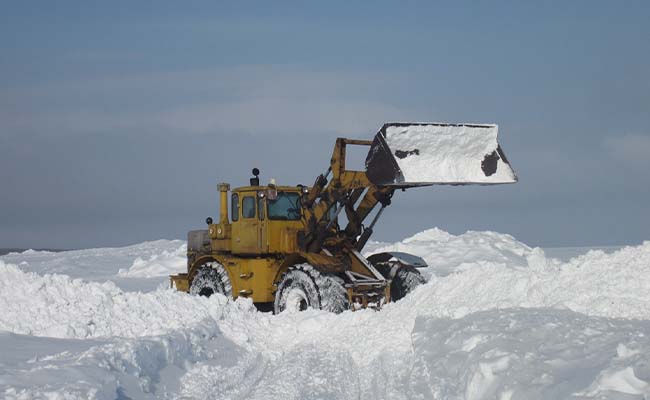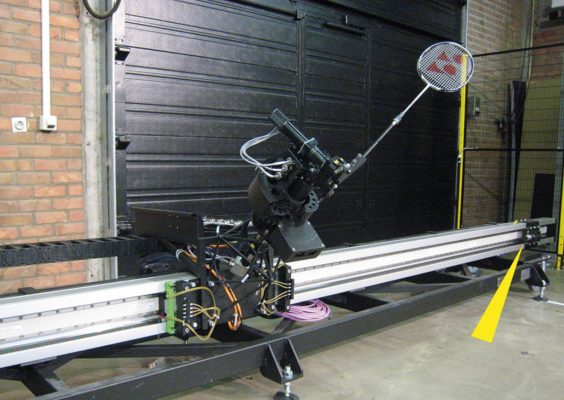The Ultimate Guide to Keep Equipment Running in Cold Climates

By Emily Newton, Editor in Chief of Revolutionized.com
Cold weather places more demands on hydraulic machines and other heavy equipment, and users must show foresight and thoughtfulness to keep them running as temperatures plunge. Here are five tips for keeping equipment working during the cold winter months.
1. Let machines warm up.
Warming up equipment before putting it to work is a good practice at any temperature. However, it’s essential in cold climates. Josh Goldsworthy, a product manager at CASE Equipment, clarified, “It’s important to remember that cold affects fluids and makes them behave differently than they do in summer months. That’s why warming up a machine is critical in cold weather.”
Goldsworthy provides a valuable reminder that engine oils and hydraulic fluids become thicker when cold. There’s an elevated chance of component failures as they circulate through the system’s hoses.
Goldsworthy suggested: “Let your engine oil come up to the proper temperature first since there is a risk of colder, thicker oil blowing gaskets or O-rings inside the engine. Then, as its operating temperatures are starting to rise, start slowly cycling through some basic boom movements, allowing warm hydraulic fluids to circulate through the system.”
He continued: “Then, once you’ve done that a few times, begin slowly cycling the bucket as well. This way, you’ll have warmer, thinner oils moving through your hoses, and there will be less likelihood of blowing a seal.”
Goldsworthy also cautioned users to not overlook equipment attachments. They’re often even more exposed to the elements and need time to warm up as well.
2. Prepare and protect batteries.
Cold weather is harsh on batteries. It can take them 30 hours to thaw if they freeze when left outside. However, a battery blanket can prevent that from happening.
Users should also take the necessary precautions to verify that batteries perform well in cold weather. Testing them before temperatures drop is a smart plan. It’s also useful to check that the terminals and connections are sufficiently tight and free from corrosion.
Replacing a battery that is more than four years old before the cold weather arrives is another worthwhile strategy to keep equipment running. User also need to take practical steps if the equipment has a battery-operated hydraulic component.
A delivery truck may have a battery-powered hydraulic liftgate. It will take longer to charge that battery in colder temperatures due to the extra voltage needed. However, investing in a DC-DC converter is a practical way to keep the charge in cold climates by boosting the voltage.
3. Address fuel and engine needs.
It is five times harder to start an engine at -17°C (1.4°F) than at 26°C (78.8°F). Cold cylinder walls, gelled fuel, and electrical failures are some of the main conditions that make starting more difficult. Winter fuel blends are less likely to turn gel-like when the temperature drops.
It’s also a good idea to change the fuel filter before cold weather arrives. That makes it less likely to freeze. Changing the fuel filter on the recommended schedule also prevents future engine issues unrelated to cold weather. It should also make the motor more fuel efficient.
Consider switching to a lightweight engine oil in cold climates. An oil with a lower viscosity flows more easily than one that’s higher. However, users should refer to the equipment manufacturer’s recommendations for the type of oil to use. One that is too lightweight may not lubricate the engine effectively during operation.
Checking the engine’s coolant system is another important step for smooth operations during cold weather. Prevent freezing by ensuring there is a higher coolant-to-water ratio when temperatures drop. The operating manual should confirm the ideal balance during cold weather. Inspect the hoses and belts for signs of damage and verify there are no radiator leaks.
4. Consider storing equipment with delicate parts.
Equipment with sensitive electronics or other components that cannot withstand prolonged exposure to the cold should be stored indoors all or most of the time during the harshest times of the year.
This is also a good solution for equipment that will not be used during the cold months. If there is no option for storing it indoors, consider keeping it partially sheltered. One option is to park it under a roof.
5. Give operators cold-weather training and advice.
Employees who operate heavy equipment often work in industries that require specific precautions to maintain safety. More than one-third of deaths occur in the construction sector because of falls. Equipment operators may not work at heights, but fall risks still exist, such as climbing into or out of heavy machinery.
Operators who use heavy equipment in the winter should be trained about their role in keeping it running well. They may not immediately consider that responsibility. However, once they take ownership of it, they’re significant contributors to a machine’s winter-weather performance. The individuals administering this education must show the link between worker safety and properly functioning equipment.
Tire pressure drops about 1 pound per square inch for every 10-degree reduction in air temperature. Users in the habit of checking the tire pressure at certain intervals may need to substantially adjust those practices during cold weather.
Fuel lines and tanks can also freeze overnight. Operators can prevent that by draining the water from the separator and refilling the tank after using the equipment. Part of their winter-weather regimen can also include fuel additives. These products can help thaw frozen filters, liquefy fuel that gets icy, and aid in removing excess moisture.
Operators should knock snow and ice off the tires at the end of the workday to prevent the machine from becoming stuck to the ground. An alternative is to park the equipment on planks.
Users cannot hope to keep equipment running well during cold periods without putting time and effort into making it happen. Creating a checklist that reminds operators to carry out upkeep duties at certain times is one way to ensure nothing is overlooked or done at the last minute.
Emily Newton is Editor in Chief of Revolutionized.com. For more information, visit https://revolutionized.com/.







